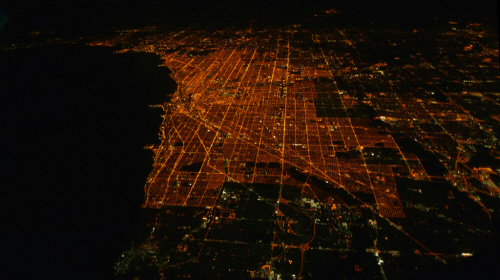
On Friday I posted about an ongoing effort by the DEA to put automatic license plate reading (ALPR) devices on public interstates, where they will sweep up records of Americans’ travel and store it for two years. The agency is now pushing to deploy them in Utah and has already done so in states along the southern U.S. border.
But looking forward, if nothing is done, we can expect this technology to expand not only geographically, but also in how it is used. In particular, we can expect all kinds of cross-referencing and data mining techniques to be applied to the information streams generated by ALPR scanners.
As I noted in Friday’s blog, the DEA has said that it wishes to use the technology for “intelligence” and to “research the movements” of suspects, and for “statistical information.” All this points toward efforts to data mine license data.
We know that ALPR is already being used this way in at least one government program: the Automated Targeting System, which assigns computer-generated “risk assessment” scores to all travelers who cross the nation’s borders, and retains the data and scores for 40 years (we wrote up these materials on ATS in 2007 when the program first came into public view). According to DHS, in a 2006 ATS ,
ATS-Land (ATS-L) is a module of ATS that provides for the analysis and rule-based risk assessment of private passenger vehicles crossing the nation's borders. By processing and checking of the license plate numbers of vehicles seeking to cross the border, ATS-L allows CBP officers to cross-reference the TECS [a law enforcement ] crossing data, TECS seizure data, and State Department of Motor Vehicle (DMV) data to employ the weighted rules-based assessment system of ATS. In this way ATS-L provides, within seconds, a risk assessment for each vehicle that assists CBP Officers at primary booths in determining whether to allow a vehicle to cross without further inspection or to send the vehicle for secondary evaluation.
Local law enforcement will undoubtedly want to engage in similar “risk analysis” cross-referencing—especially as ALPR, combined with other technologies, makes it increasingly easy to do so. If the technology continues to get cheaper, and no restrictions are placed upon police use of it, and it ends up deployed on every block, we could easily see scenarios such as:
• A DEA risk-analysis system alerts the police in Utah that the same car is traveling between Salt Lake City and Nogales, Arizona on a monthly basis. The next night, a divorced father visiting his child in Arizona receives a knock on the door from federal agents to interrogate him about his travel. Perhaps, with the help of other, circumstantial evidence, they even get a warrant, execute a , and his , traumatizing his child.
• An affluent suburbanite has a friend who lives in a poor neighborhood where drugs are often sold. The police get an alert that he is a regular visitor to this neighborhood, and he gets pulled over on a pretext (“driving erratically”) several times so they can search his car, and a police “intelligence squad” opens a file on him.
• A student working nights as a bartender gets stopped frequently on suspicion of DUI because the police know that she is driving home from a bar.
• The FBI begins investigating a man because he visited a series of places—a mosque, a hardware store, and a money-transfer service—that the government’s computers have flagged as “suspicious.”
• The FBI opens a probe into the background of a woman because her car was parked at an apartment building—and then coincidentally again later at a store—at the same time as a man who is on a terrorist watch list.
• The police develop virtual reality glasses that, when the wearer looks at a vehicle, summarize in clear, at-a-glance graphical form various information: the owner’s police record, how many points the owner has on his or her license, how far from home the vehicle is, the owner’s TSA Pre-Check score, and other data. This creates a negative feedback cycle for some unfortunates, because those whose profile attracts attention are stopped by the police with disproportionate frequency, including for minor infractions—leading to an even worse profile.
Over time, as stories of such stops spread, Americans begin to feel that they are being watched wherever they drive and must constantly ask themselves, “Am I doing anything suspicious?” When they watch movies of the old days when people could drive around anonymously, they feel nostalgic for that lost freedom.

